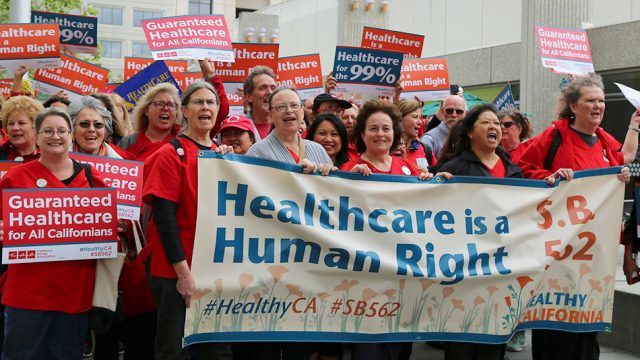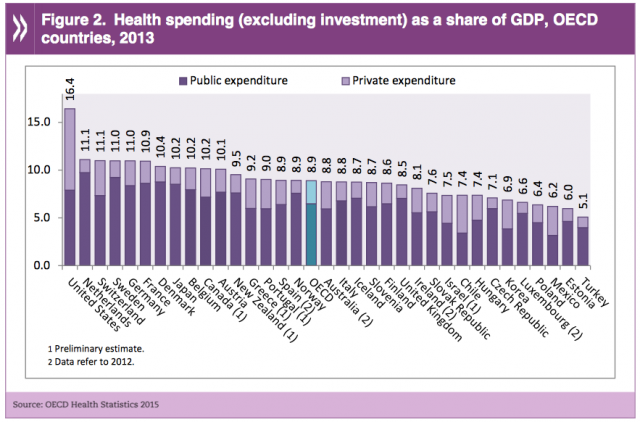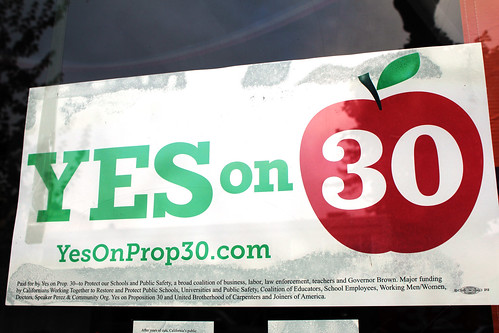Unless you’ve been living under a rock lately, you know that San Francisco is facing an affordable housing crisis. This crisis is not new. It’s been around for at least 40 years, and the city has faced a housing shortage for at least 70 years.
The question that many are asking is not only “how do we fix this?” but, in order to jockey for position in how to answer it, they’re also asking “whose fault is this crisis?” Too often, the SF housing crisis is used to attack progressives from the right, in the service of free market solutions – even though, as the historical evidence makes clear, this crisis was not their fault.
Progressives have spent the last two decades fighting to make SF more progressive. Had they been listened to, perhaps SF might still be affordable today.
The most recent iteration of the “who made SF unaffordable?” discussion was kicked off today by the widely respected Gabriel Metcalf of SPUR. Writing at CityLab Metcalf argued that the roots of SF’s housing crisis lay in progressive anti-growth policies:
San Francisco progressives chose to stick with their familiar stance of opposing new development, positioning themselves as defenders of the city’s physical character. Instead of forming a pro-growth coalition with business and labor, most of the San Francisco Left made an enduring alliance with home-owning NIMBYs. It became one of the peculiar features of San Francisco that exclusionary housing politics got labeled “progressive.” (Organized labor remained a major political force throughout this time period, and has allied with both pro-growth and anti-growth forces, depending on the issue.) Over the years, these anti-development sentiments were translated into restrictive zoning, the most cumbersome planning and building approval process in the country, and all kinds of laws and rules that make it uniquely difficult, time-consuming, and expensive to add housing in San Francisco.
This is the common argument about SF – it’s expensive because progressives got mad at developers and stopped new growth from happening in order to preserve the city in amber, with no thought given to new residents.
But is that actually what happened?
Let’s take a look back at history. The first thing to keep in mind is that by 1960, San Francisco was mostly built out already. The Sunset should probably not have been packed full with two-story homes. But progressives didn’t make that decision.
The modern era of progressive San Francisco begins in the early 1960s, and one cannot understand the progressive approach to SF housing policy without looking at that era, as I did a decade ago for research on a never-completed PhD dissertation.
Like most US cities, SF had its share of residential segregation. In the City, this meant that African Americans lived in the Fillmore and in the Bayview. The Fillmore’s once-grand Victorians had become slum housing as a result of overcrowding and poverty, results of America’s ongoing racist distribution of wealth and power.
In order to try and add more housing supply to SF, as well as to clear the slums, the San Francisco Housing Authority, under the leadership of Justin Herman, proposed to redevelop most of the Fillmore. They planned to use federal funds to demolish the existing private housing stock and replace it with a mix of publicly owned housing and privately built housing.
No provision was made by the SFHA for the relocation of the tenants during this years-long process. At a time when California voters had just repealed the state’s fair housing law in 1964, this was a direct threat to the ability of people of color to remain in San Francisco.
African American residents protested vehemently. They formed groups such as the Western Addition Community Organization to fight against what they damned as “Negro removal.” They failed. Ironically, the public housing projects built as a result of the SFHA plan are responsible for keeping any black residents in the Fillmore at all – yet according to the SFHA’s own estimates from the late 1960s, most residents displaced from the Fillmore project areas left SF altogether.
The resistance in the Fillmore inspired similar resistance in the Mission, then populated by a mix of Latino and Irish residents. Unlike the Fillmore, the Mission succeeded in fighting off redevelopment.
In the 1970s, San Francisco leaders began clearing out the affordable single resident occupancy buildings in SoMa to make way for the Yerba Buena Center project. The loss of thousands of SRO units, never replaced, was a major factor that contributed to the city’s sizable homeless population. In 1977 the famous battle over the International Hotel took place, where progressives rallied to defend Filipino renters who were facing displacement so that the landlord could redevelop the site.
These battles convinced progressive San Franciscans that the vulnerable populations of the city faced a very real threat to their homes from redevelopment, whether initiated by the private or public sector. Progressives generally don’t care about a wealthy single family homeowner. But they care very much about people of color and retirees losing their homes.
That is a challenging situation in San Francisco. Because the city is completely built out, any new housing supply comes at the expense of an existing use – often displacing existing residents.
This problem was exacerbated beginning in the mid-1970s by rising housing costs. That increase began before San Francisco’s population began to grow – as Metcalf’s own article explains, SF didn’t start to add population until after 1980. The rising rents were fueled by the national inflation that plagued the country in the 1970s.
SF residents voted to adopt rent control in 1979 in part to respond to this crisis as well as to respond to the passage of Proposition 13 – specifically to stop one landlord in particular, Angelo Sangiacomo, who refused to pass on property tax savings to renters.
Metcalf argues that progressives allied with NIMBYs to make it difficult if not impossible to add new housing supply in SF. But this misses the fundamental purpose and point of progressive housing activism in SF. The goal is to stop displacement – and given SF’s attributes, a free market approach won’t solve that.
Because SF is built out, and because land values began to rise in the mid-1970s, and because of macroeconomic policies that began to push investors to demand bigger profits from the private sector, this all meant that new construction in San Francisco was going to be expensive to build and therefore expensive to rent. The private sector was never all that interested in building housing for the poor or the low-income. And after 1980, the private sector certainly was not interested in building that kind of housing.
So for many progressive San Franciscans, private housing development was seen as a way to get rid of the leftists, the people of color, LGBT residents, and the poor. Stopping the loss of affordable housing became a priority.
However, this did not mean that SF progressives became anti-supply – or that they are responsible for the city’s present crisis.
Since Mayor George Moscone and Supervisor Harvey Milk were assassinated in 1978 by a right-wing former cop, SF has been governed by pro-business moderates. There has been only one exception to this, the four-year term of Art Agnos from 1987 to 1991, and it’s not clear whether he was more of a progressive or more of a NIMBY (in reality he appealed to both, but for different reasons).
Progressives haven’t held the SF mayor’s office in at least 24 years, by even the most charitable reading. Surely pro-business mayors like Frank Jordan, Willie Brown, and Gavin Newsom should be held accountable for the city’s housing crisis.
During the last two decades, SF progressives worked hard to advance their own solutions to the housing crisis. Those solutions always included new supply.
Take a look at Tom Ammiano’s housing policy in his 1999 campaign for mayor:
2) Make the Production and Preservation of Affordable Housing the Top Priority
Increasing housing opportunities that are affordable for San Franciscans of low and moderate incomes is a civic obligation to local residents who make up the foundation of our culture and economy. San Francisco currently has the worst of both worlds: market forces that give no consideration to the broader needs of the community and out-of-date regulation that interferes with development of housing of every type.
As mayor I will:
…Review and Reform Current Planning Guidelines that Stifle Increased Housing.
I will direct the Planning Department to report on Planning Code changes that will increase new housing in ways that are not detrimental to neighborhood character. I will promote a neighborhood-driven planning process to consider increasing density along established transit corridors in the eastern half of the City and implement the State statute that gives a “density bonus” to developments that set aside 25% of units for low income residents….
….Streamline the Permitting Process
The Ammiano administration will coordinate the permit processing and record-keeping of the Department of Building Inspection and the Planning Department, improving the approval and environmental review process for both the neighborhoods and developers, particularly non-profit developers. Neighborhood concerns will be accommodated before individual permit applications through Neighborhood Master Environmental Impact Reports. Public input will still be encouraged at scheduled hearings of relevant commissions.
While this isn’t the libertarian “abolish all zoning” fantasy that some in the tech industry demand today, it’s a far cry from the anti-growth platform that many imagine SF progressives to have held.
It wasn’t just Ammiano. Matt Gonzalez’s 2003 campaign for mayor had similar policies on housing that were pro-supply as well:
A balanced housing policy for San Francisco must include a commitment to increasing the supply of rental housing affordable to San Franciscans of all incomes. Increasing home ownership is a important goal, we will still need more affordable rental housing to meet current and future demand. Rent control is important for stabilizing housing and preventing displacement of existing tenants, but because of vacancy decontrols, assuring affordability requires that rental units are made permanently affordable through other means-inclusionary housing, which are permanently affordable units in market-rate developments, and construction or purchase of affordable rental units by nonprofit housing providers. As mayor, I will increase the supply of permanently affordable housing for San Franciscans of a range of incomes and household sizes.
I don’t know how much clearer it could be. Both Ammiano and Gonzalez, heroes and leaders of the SF left, were pro-supply. Had they been able to govern SF, we might have seen a different outcome. But even their options were limited, and their campaigns came 25 years after the housing affordability crisis first hit SF.
There are other problems with Metcalf’s argument, as Mark Hogan has explained. He shows how even Chris Daly, the arch-progressive of SF politics, helped deliver more housing supply:
Chris Daly (arguably one of the most “Progressive” politicians San Francisco has had in recent years) helped pave the way for the massive number of new units in SOMA by brokering a community impact deal in 2005, and these units are the majority of the housing that has been created in the last 10 years. The Eastern Neighborhoods Plan, which upzoned large areas on the east side of the City, was approved by a Progressive-majority Board of Supervisors. It should also be noted that most of the areas that have been upzoned are less wealthy and more dominated by renters than the areas that are primarily single family.
Hogan also challenges another part of Metcalf’s argument:
The line that keeps getting repeated that we should have been building 5,000 units a year is absurd taking into account the realities of development. The math makes sense in the simplest way possible, but we all know that no developer is going to build those units at the bottom of a recession (and the economy is always cyclical), and nobody 25 years ago would have predicted the level of in-migration and income inequality we have right now- even taking the population boom that started in 1980 into account. Far more units than that have been permitted in each boom and in most cases developers have declined to build them (or deferred them until the next cycle). The fact that they haven’t been built has more to do with economics than obstructionism.
Free market acolytes have seized on articles like Metcalf’s to try and discredit progressives and their values, and to advance their pet theory that if we just got rid of limits on height and density, or maybe even got rid of zoning altogether, SF’s housing woes would be solved. Longtime Calitics readers know that I have supported greater urban density and less restrictive housing policies for at least the last seven years. But not even Metcalf thinks that a free market approach will, on its own, solve the problem:
Let me say very clearly here that making it possible to add large amounts of housing supply in San Francisco would never have been enough by itself. A comprehensive agenda for affordability requires additional investments in subsidies for affordable housing. Given the realities of economic inequality, there are large numbers of people who would never be able to afford market rate housing, even in a better-functioning market.
And SPUR, which occupies a place in the SF political landscape that is hard to categorize, has a great set of ideas for how to make SF affordable again. There is much in those proposals for progressives to like.
Yet even SPUR’s proposals share many of the same elements of the plans Ammiano and Gonzalez advanced in their 1999 and 2003 campaigns. There is greater convergence between SPUR and progressives than might be assumed.
Ultimately SF is at the leading edge of a problem that is now facing all US cities. Urban America has become expensive. As we live in an era of increasing inequality, and in a time where macroeconomic policies favor investments that benefit the rich over those that benefit the poor or the middle, no market solution alone can solve the problem.
Government will be needed to help solve the crisis – through rent control, through subsidies, through an expansion of public housing stock, and through facilitation of private sector housing stock too. Progressives have been calling for that for years. They weren’t the ones in charge of SF when the crisis hit and they haven’t had full control over city government in over two decades.
Perhaps, just perhaps, the blame lies not with progressives, but with SF’s pro-business politicians, for whom solving the affordable housing crisis has never been a priority at all.





You must be logged in to post a comment.